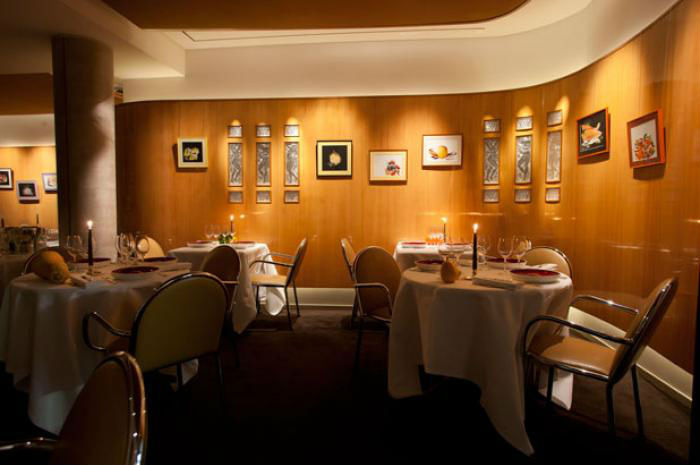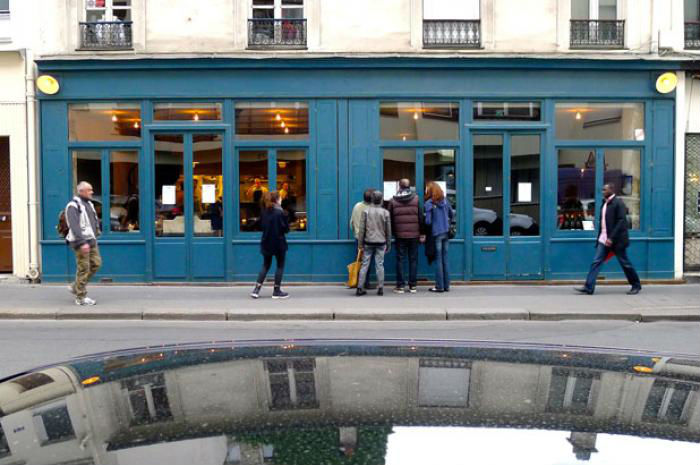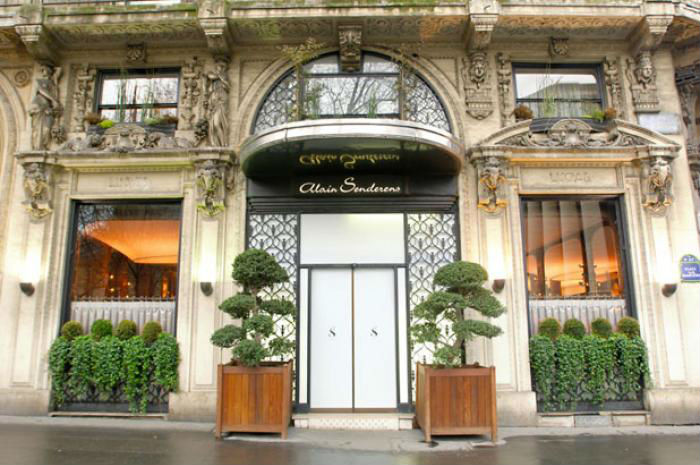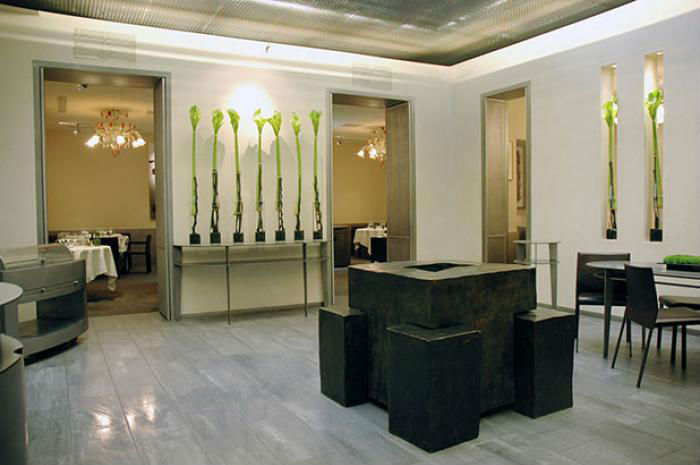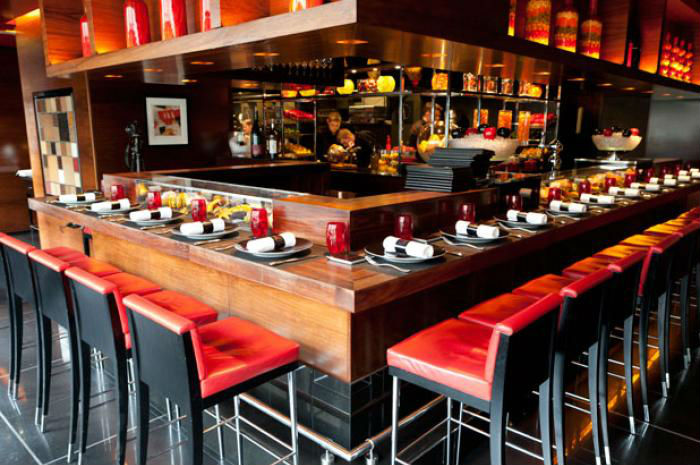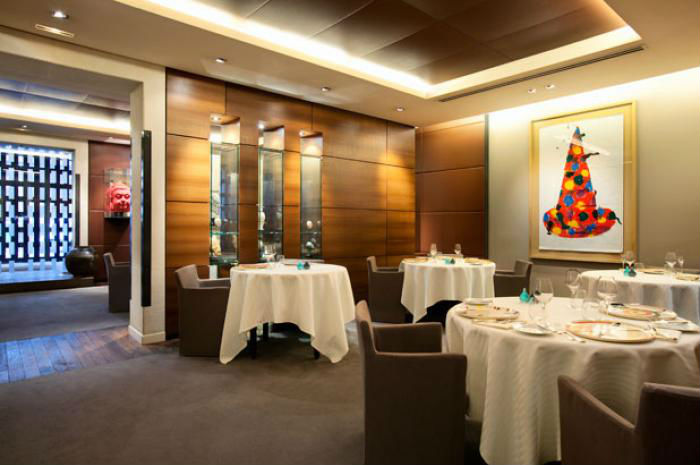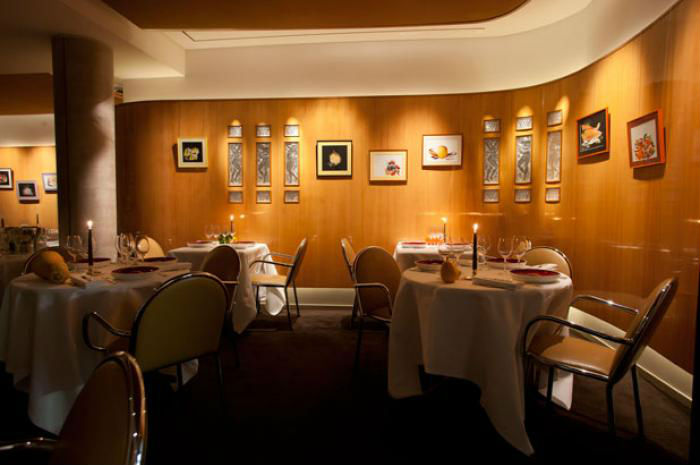The 10 Best Restaurants In Paris
Victor Hugo once said: "To err is human. To loaf is Parisian." In Parisian restaurants, even the fanciest ones, you don't just go, finish your courses, and leave. You stay, drink, and talk; you loaf. Eating in Paris is not just about the food — though the food is so outstanding that it very well could be. The ambiance pairs with the food like steak and red wine.
Being a food critic who has to choose the 10 best restaurants in Paris is not unlike being an admissions officer at a top university. You have to select, based on food and ambiance, the very best out of a very large pool of highly qualified candidates. And like admissions officers, food critics are usually proud of their decisions, for, though it wasn't easy, it was given a lot of thought. We definitely put in a lot of thought when we made our 25 Best Restaurants in France and Monaco list, and even more thought when we made our 101 Best Restaurants in Europe list. Combine those and you get our extremely well-thought-out list of the best restaurants in Paris.
10. Septime
This modern French bistro from a classically trained chef, at home in the trendy 11th arrondissement, offers a $75 minimalist but satisfying tasting menu. Unusual combinations — milk-fed veal with trout roe, slow-cooked pork with anchovy cream — rise above gimmickry to sheer deliciousness. Wines from small, biodynamic producers populate the wine list, and the beautiful blue façade turns many heads.
9. Senderens
Chef Alain Senderens earned Senderens (then named Lucas-Carton, and first opened as the "Taverne Anglaise" in 1732) three Michelin stars and worked at the establishment for more than 20 years. As democratized versions of the haute cuisine that Senderens cooked during his time as chef, items like foie gras poached in vegetable broth and lobster with petits pois and chorizo please food snobs and reluctant eaters alike. The restaurant is still run by the Senderens family.
8. Restaurant Le Meurice at Le Meurice Hotel
Don't let the plush curtains and ornate chairs at Le Meurice fool you into thinking the food is only for extremely refined tastes. When Alain Ducasse took over the dining room from Yannick Alléno, he and collaborator chef Christophe Saintagne opted for a more "down-played" concept that includes simple ingredients and more vegetables. Menu descriptions are brief: vegetables and fruits, turbot with olives, spicy lamb with artichokes, lobster. Though that will set you back $520 per person, it is worth it.
7. Alain Ducasse au Plaza Athénée at Plaza Athénée Hotel
Alain Ducasse strikes again. Beneath a chandelier starburst of 10,000 dangling, illuminated crystal pendants is a space that evokes fine dining in opulent Louis XIV style, Alain Ducasse au Plaza Athénée serves the finest seasonal contemporary French cuisine. The produce-centric dishes still include some meat and seafood, but the emphasis is on greens and grains, as well as vegetables grown in the château garden at Versailles. Don't let this freak you out, but Ducasse strives to create a more "natural" cuisine by cutting back on cream, butter, and sugar. The fact that he can do so and still earn three Michelin stars is amazing.
6. Le Carré des Feuillants
If you're going to eat frog legs in France, do it here. Chef Alain Dutournier's spicy frog legs and chanterelle mushrooms with rocket salad, wheat, and watercress juice is legendary, as is his roasted red mullet with sea urchin and botarga, served with cabbage semolina and black olive oil; thick chop of "Noir de Bigorre" pork served with truffle macaroni and white beet; and caramelized ginger and figs topped with walnut crisp and served with a side of walnut ice cream. Though more modern-looking than some of the other restaurants on this list, Le Carré des Feuillants will soon be the stuff of history.
5. Epicure at Le Bristol
Scallops with white truffle gnocchi, watercress juice, and brown butter; foie gras cooked en papillote, served with oysters and Brussels sprouts and a black tea-infused broth; pasta stuffed with black truffle, artichoke, and foie gras and baked with aged Parmigiano-Reggiano; and lychee with rose-scented meringue, pear, and lemon. Need we say more? Yes, we need. Enjoy beautiful views of the French garden while enjoying chef Éric Fréchon's consistently fantastic meals.
4. L'Atelier Saint-Germain de Joël Robuchon
The illustrious French chef returned from his decade-long retirement with a bang by opening L'Atelier Saint-Germain de Joël Robuchon, which combines his French technique with food inspired by his travels through Japan and Spain. Our favorite dish is Robuchon's renowned Le Burger, composed of two marvelous beef, foie gras, and tomato sliders, accompanied by chips and a tomato, soy, sesame, and Armagnac sauce.
3. Le Cinq at the Four Seasons Hotel George V
With a wine cellar housing 50,000 bottles and two Louis XIV cupboards, golden Louis XVI medallion chairs, sumptuous velvet curtains, and enormous Regency mirrors, Le Cinq is the place where you want to order items like spider crab from Brittany with gold caviar, fennel cream, and lime crab cake; milk-fed veal sweetbread, browned and served with licorice, steamed chanterelles, apricot, and Corsican ham shavings; and a selection of regional cheeses.
2. Guy Savoy
Guy Savoy is a master at imagining combinations that aren't immediately obvious but that make wonderful sense, like artichoke soup with black truffles and brioche spread with truffle-mushroom butter; beets of different hues with crab meat; Bresse chicken breast with lemongrass and chard glazed with chicken stock and bay; and terrine of grapefruit with tea sauce. Don't let the sensible, subdued décor fool you into thinking the food will not blow your mind.
1. L'Arpège
We voted L'Arpège the No. 1 best restaurant in Europe, and for good reason. Alain Passard, a protégé of Alain Senderens, combines tradition with daring. He uses vegetables sourced from his three biodynamic farms in various parts of France to make haricots verts with fresh almonds and white peaches; vegetable sushi with fig leaves and tomato "petals"; lemon cucumber with hazelnut praline and acidulated cream; and a remarkable take on ratatouille, involving both cooked and raw vegetables — all far more complex and irresistible than they might sound. Though these dishes have no meat, they are clearly prepared with the same careful attention and gusto with which Passard learned to cook rotisserie-roasted duckling, chicken, lamb, and game birds from his late grandmother. There are far more expensive restaurants in Paris, but few of them match the service, food, and comfort of L'Arpège.
